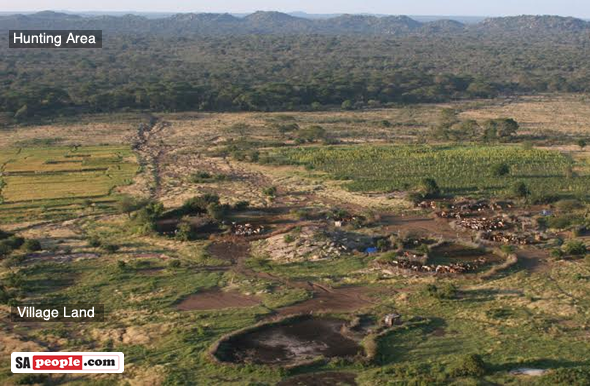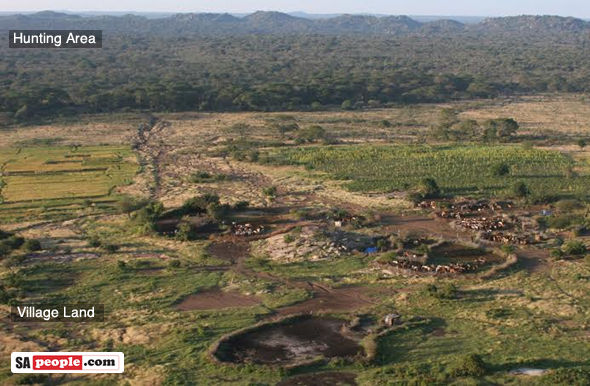
Two Sides: A Safari Operator Speaks Out on Melissa Bachman Debacle
In response to the outrage sparked by photos of American TV celebrity Melissa Bachman gloating behind a lion she killed in South Africa, a retired professional hunter speaks exclusively to SAPeople about the well-meaning but potentially dangerous implications of the flurry of anti-hunting social media campaigns. More than 430,000 people have signed a petition calling […]

In response to the outrage sparked by photos of American TV celebrity Melissa Bachman gloating behind a lion she killed in South Africa, a retired professional hunter speaks exclusively to SAPeople about the well-meaning but potentially dangerous implications of the flurry of anti-hunting social media campaigns.
More than 430,000 people have signed a petition calling on the SA government to deny Bachman entry to the country. Over 274,000 have ‘liked’ a ‘Stop Melissa Bachman’ Facebook page that calls for an end to trophy hunting. Are they right?
SOCIAL MEDIA AND DEAD ANIMALS
by Craig Doria, South African-born Safari Guide and retired Professional Hunter
The problem with photographs posted on social media sites is that they tend not to allow for informed argument. They rely on emotive hard-hitting photos or pithy one-liners to sway opinion.
There is no doubt that for the majority of middle-class people these anti-hunting photos posted on Facebook of smug people with dead animals are revolting and decadent to look at. These ‘trophy shots’ never work.
The hunter believes that in killing an animal he will somehow own it and its freedom and beauty but of course he never does … he just kills it. The people who kill the animals are so often doing it for vanity and a sense of domination over nature.
BUT these anti-hunting photos that do the rounds are also a worrying indicator of where the world is going. They show that we are willing to form rash opinions and hurried decisions based on our emotions only. Do we no longer value the role of science and informed opinion?
There is another side to the hunting debate.
There is a whole science built around the conservation of hunting. There are men and woman, doctors and professors, who have studied and worked in the field for years. Hunting and conservation are not mutually exclusive.
When these photos are sent around on the Internet they appeal to emotions to generate an anti-hunting sentiment amongst people who usually don’t know the issues. One doesn’t have to like hunting. One can, and should, feel disgusted by those photographs.
But one should surely also look at the conservation potential of hunting, look to see what the positives may be.
What does the death of this animal do for the protection of the species or for the protection of this piece of wild land?
South Africa unfortunately has SOME operators that give hunting a terrible name by the “Canned Hunting” that takes place. In other parts of Africa there are also some corrupt and unethical operators, but at the same time there is a model that works, that is sustainable and that is very necessary for conservation.
In other countries in Africa, hunting most often takes place on land that is secondary in terms of carrying capacity i.e. how much wildlife it can carry. The primary land is usually a national park which is sacrosanct and totally protected.
The hunting areas are harder; they have more tsetse flies, less roads, less water on which wildlife is dependant; the soils and thus grazing are poorer, they are often hotter. In my experience most of these hunting areas could not be used successfully for non-hunting tourism. I have tried to take non-hunting tourists into these areas and it doesn’t work.
I know a hunting company that is the custodian of 27,000 square kilometers of hunting land. This company has to tender every five years for the right to hunt on these huge pieces of land. There are NO people living in these areas. They are pure wild bush. These areas come with great responsibilities though. The hunting company has to manage them.
The government allocates a certain number of animals of each species that may be killed by hunters. The number is based on what is sustainable, i.e. hunting must be able to continue forever. Shoot too many animals and the hunting cannot continue. The company provides ten anti-poaching teams each made up of five rangers and a land cruiser. The company puts in roads, does community work in surrounding villages, does aerial game counts and digital mapping for management purposes. And the company uses the land to generate an income in a sustainable manner.
Land simply has to generate revenue in Africa in order to be protected.

African governments do not have the money to protect big wild areas merely for the sake of protecting them. The hunting companies have to pay a number of fees to village authorities and to central government.
They capture over 1000 poachers each year. Think what would happen if those anti-poaching teams disappeared. Poachers don’t pay for the land. Poachers don’t practice sustainable hunting.
Hunting is a functioning industry and where managed properly it has been going on for a long time. If the hunting were to stop, I have no doubt that those 27,000 sq kms would be overrun within four years.
Those conservation areas would be lost forever.
One just has to look at the boundaries of the hunting areas to see the pressure that is on them. Populations are growing, and people want more land. In the photo above, the land at the bottom is village land and the land at the top is the hunting area. The conclusions to be drawn from it are obvious.
If the anti-hunting lobby are happy for these areas to go to the people and to be used for small-scale peasant farms and cattle and goat grazing then that is a noble sentiment.
That would be placing the wellbeing of people (although short-term) before the wellbeing of wildlife and they would have a strong case. But I suspect that is not the case. I suspect that they wish to have those animals protected totally in an area that somehow pays for itself.
Of course there is corruption in the hunting industry, and that corruption taints all the hard work that the ethical hunting companies put in.
But shouldn’t the people who try to use emotions to sway opinion instead of using science, ask themselves if they have contributed as much to conservation as that hunting company?
If these people really want to make a difference wouldn’t they be better off supporting ethical hunting practices; working with hunting companies who protect the land, or even raising money to help villages surrounding the hunting areas to become self sufficient?
That way they would be helping to keep thousands of square kilometers of wild country, and wild animals, protected. Their current social media campaigns could result in a very different scenario, in the loss of the very thing they’re trying to protect .
